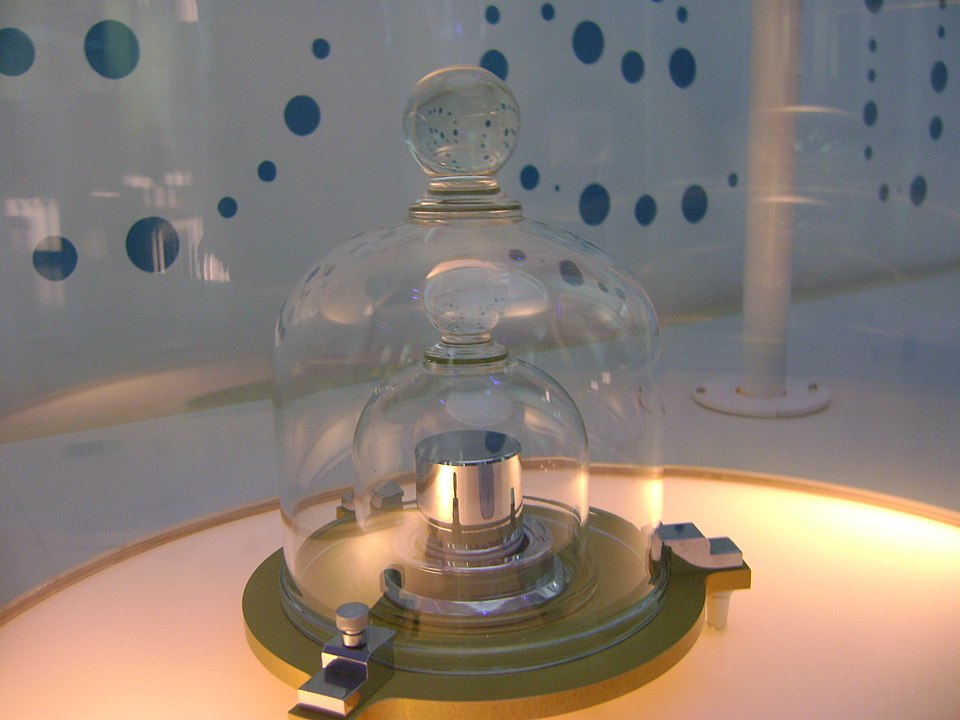
I learned this today. The International Prototype of the Kilogram, kept in Paris, is not accurate enough to be the standard for all kilograms around the world.
Different measures for different things have been used around the world since people began measuring things. These measurements were usually related to the human body or common things in some way. A cubit is the length of the arm from the elbow to the tip of the index finger. A foot is the length of a foot. A mile was 5000 feet. And so on. Different places would have slightly different variations on each measurement. Often the different variations would favor a merchant over a customer. To stop this, and introduce more trust, various kings introduced laws to standardize the measurements. However, it was very difficult to have a standard of any measurement.
On May 20th, 1875, the Metre Convention was signed by 17 different countries. Their aim was to perfectly standardize all important measurements. This was the culmination of the metric system which had started during the French Revolution.
Like most countries, France had a mishmash of weights and measures that were confusing and archaic. They took the French Revolution as an opportunity to reform this system. They decided that the standard of length should be based on the Earth, and they defined one meter as one ten-millionth of the length of an Earth quadrant. They defined seven base units: meters, kilograms, seconds, amps, kelvin, candela, and moles. They used a logical system where conversion tables are not needed, and the system can be easily used.
In 1793, they defined a kilogram as the mass of 1 liter of water. In 1799, a platinum kilogram prototype was created and stored in the Paris National Archives. This was the kilogram that all other kilograms would be measured against.
The Metre Convention in 1895 was an attempt to make sure that the seven defined base units couldn’t change and would be the same anywhere on Earth. It created the International Bureau of Weights and Measures, which is responsible for making sure that a kg in France is the same as a kg in Russia. But how do you do that?
The International Prototype of the Kilogram was made in 1889. It is the size of a golf ball and is made of 90% platinum and 10% iridium. It is twice as dense as lead, isn’t very magnetic, and is very resistant to oxidization. It weighs exactly one kilogram. It replaced the 1799 kilogram prototype as the new official kilogram.
The idea was that if there existed a perfect kilogram, everything else could be calibrated with it or checked against it. You could never have a kilogram that wasn’t exactly a kilogram. And that is what happened. Companies that created weights, or scales, or anything to do with measuring weights, would calibrate and check them against the official kilogram.
However, you can’t go to Paris every time you want to calibrate something. So, copies of the official kilogram were made and stored in different countries around the world. It was now possible to calibrate a kilogram without having to go to France, but you still had to travel to wherever the kilogram was kept in your country.
The official kilograms kept around the world could be checked and calibrated against each other. The official kilogram in Paris has only been checked three times since it was made in 1889. These official kilograms are so important that when they are taken to Paris to be checked, they are hand carried on airplanes.
Having a perfect kilogram led to the next problem. What if it isn’t a perfect kilogram?
The official kilograms are kept inside two bell jars to protect them from the air. They cannot be touched by hand, or even with gloves. They are picked up and moved using a special tool wrapped in filter paper so as not to be scratched. Because the biggest problem is that the perfect kilogram is not a perfect kilogram. They do get scratched. They pick up dirt and dust. They even absorb atoms from the air.
When they were made, the idea of an official kilogram was a sound one. But now, it is not accurate enough to be useful. So, in 2019, at the 144th anniversary of the Metre Convention, four of the seven base units were redefined using fundamental universal concepts that never change, instead of human made items that do change.
The kilogram is now calculated by taking the fixed numerical value of the Planck constant (6.62607015×10-34) which is equal to kg m2s-1. The Planck value was worked out using a Kibble Balance. I am now going to have to go and learn what the Planck constant and a Kibble balance are now.
So, the official kilogram in Paris is manmade and can change in weight, so the kg has been redefined using fundamental nonchanging concepts. And this is what I learned today,
Image By Japs 88 – Own work, CC BY-SA 3.0, https://commons.wikimedia.org/w/index.php?curid=19652787
Sources
https://en.wikipedia.org/wiki/International_Prototype_of_the_Kilogram
https://en.wikipedia.org/wiki/Metric_system
https://en.wikipedia.org/wiki/2019_redefinition_of_the_SI_base_units
https://en.wikipedia.org/wiki/Metre_Convention
